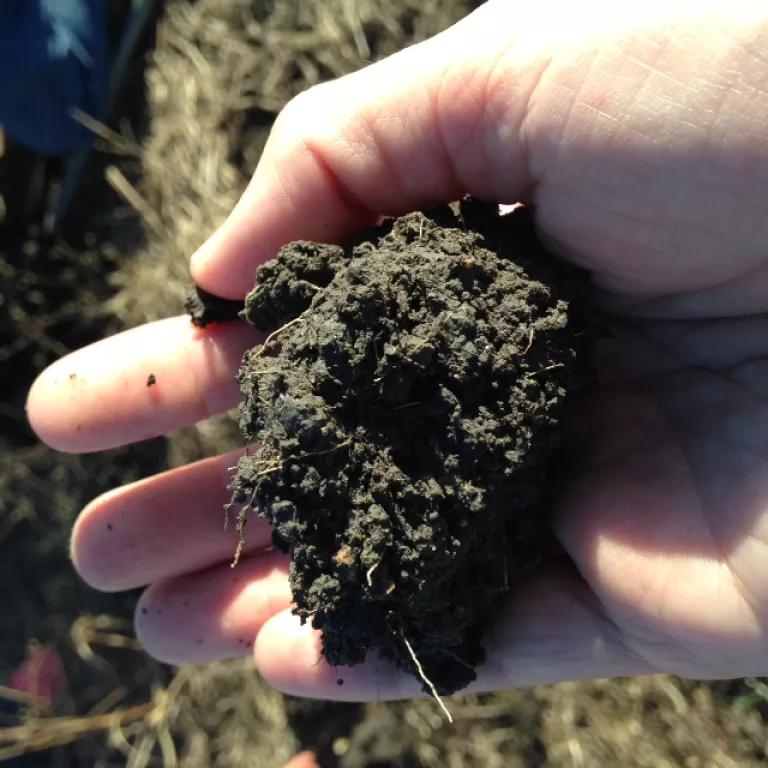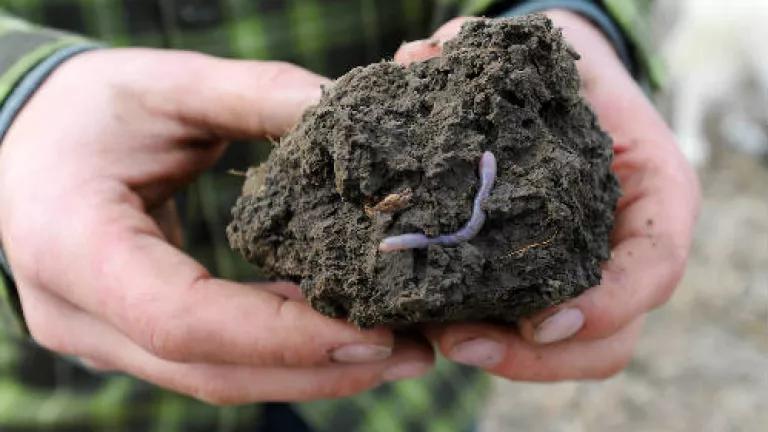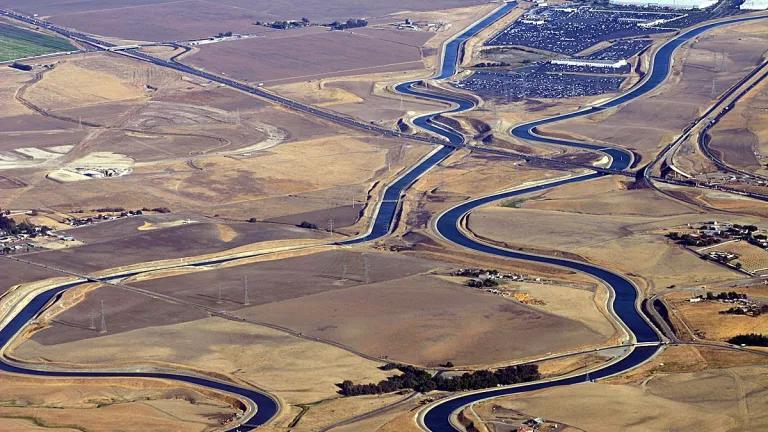Celebrating Soil Builders on World Soil Day

December 5th is World Soil Day. If you’ve never taken the time to say “thank you” to your soil for all the good food, clean water, biodiversity, and carbon sequestration it provides, today’s a good day to do it. Today, I'd like to thank the food producers who are actually building healthy soil and taking extra time to teach others how to do it.
I spent the past week attending the Southern Soil Health Conference in Belton, Texas, organized and led by Green Cover Seed and the White House Champions of Change Keith and Brian Berns. Keith opened the conference with a stunning call to rebuild 900 million acres of degraded American soils; Mr. Berns made it clear that it would take good leadership, preparation, and hard work to rebuild soils, but there was never any question that it can be done. NRDC has helped sponsor the conference for three years now, and this was my second time attending. Once again, I was awestruck by the leadership and dedication of the food producers who are putting their all into rebuilding healthy soils.
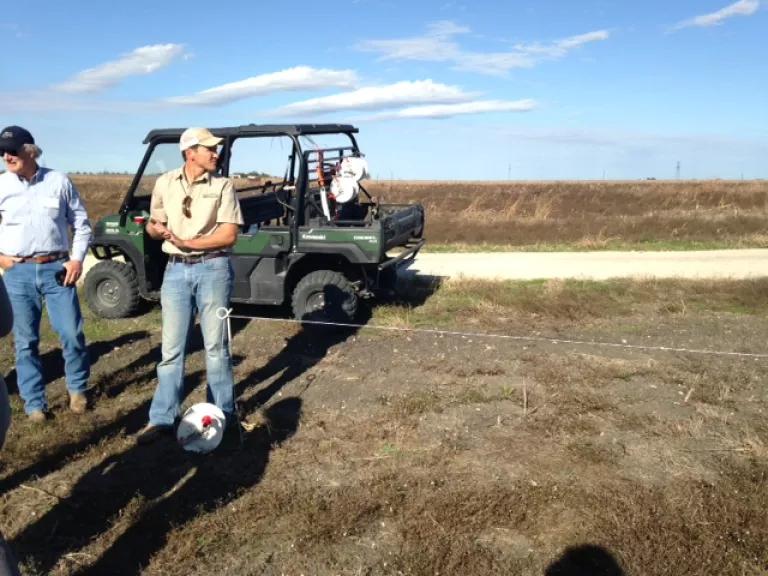
We kicked off the conference with a hands-on soil workshop at Green Fields Farm. (Read this NRDC guest blog by owners Jonathan and Kaylyn Cobb to learn more about the farm.) My first stop was the grazing tutorial; livestock are an important part of healthy soil management. The key is to use a grazing rotation that keeps cattle on a small portion of a pasture where they can graze intensively for a short time, then move on to the next paddock of fresh grass while the recently disturbed area rests. The disturbance is actually good for the grass roots and the soil, mimicking the prairie ecosystems grazed by bison and antelope in the past. Producers learned how to calculate available forage dry matter in a paddock, and the number of cows to graze per acre. Jonathan Cobb demonstrated building a simple paddock with wire and stakes. I heard from a lot of producers who use this method, and all of them expressed that it's very low-stress, once you get the hang of it. “Put the cattle to work for you,” one speaker said. The general concept is that if you graze cattle the right way, they will help create a healthier soil system and you will have better forage to feed your cattle throughout the winter.
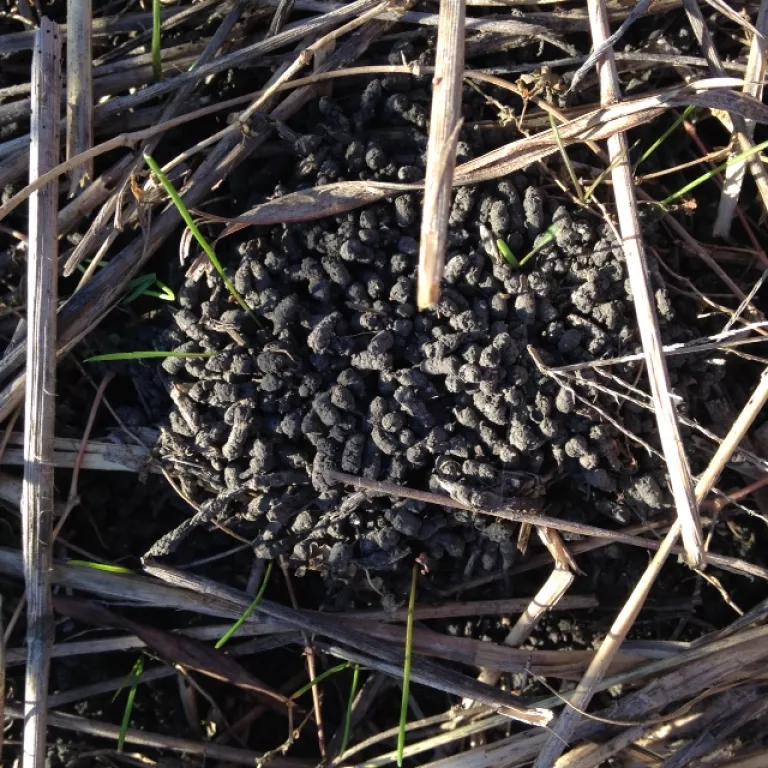
Next, we took a closer look at the soil on Green Fields Farm. Healthy soil biology is important; earthworms, insects, fungi, and microbial life all play a part in building soil organic matter, breaking down manure, soil mineral balance, and pest control. The Cobb’s soil has about 4-5% organic matter on average, up from 1-2% since they started using regenerative soil techniques about 5 years ago. Another key principal of good soil health is not to disturb the soil, and I heard that repeated throughout the conference. Healthier soil holds nutrients and filters water, so that water runoff from a healthy soil farm will be cleaner than farms that use conventional tillage methods. A nitrate strip test compared runoff on Green Fields farm to a neighboring conventional farm, and the difference was clear—literally.
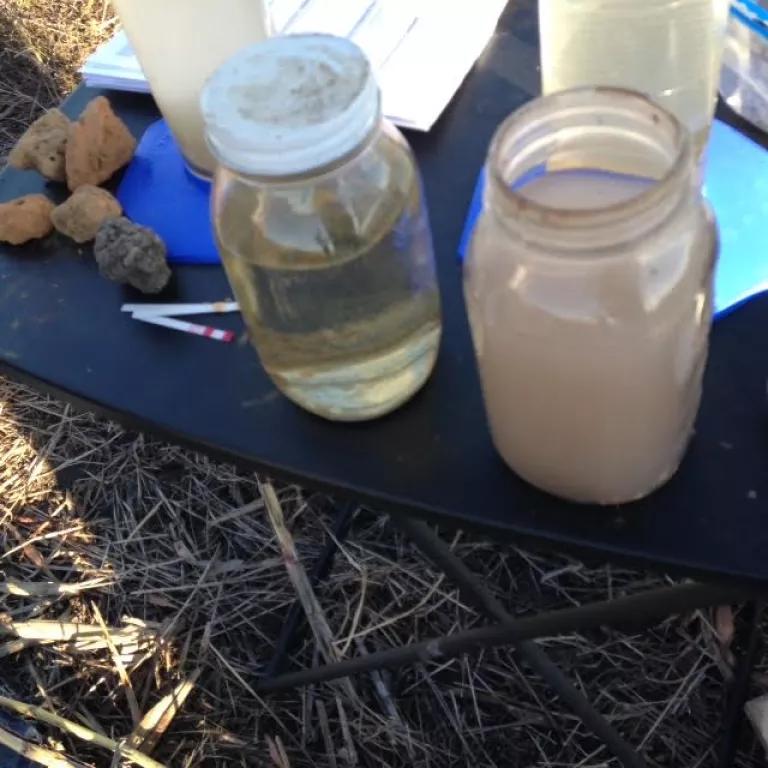
Finally, we heard from a local commercial honey producer who is partnering with Green Fields Farm by keeping some of his bee hives on site. One of the benefits of healthy soil systems is that biodiversity goes to work to control pests and weeds, so farmers can cut back on the use of pesticides and other chemicals that are harmful to the environment. The Walker Honey bees that live on the Cobb’s farm can do their important pollination work and make their honey without the danger of pesticides. Another recurring theme of the conference was the need to get away from chemical inputs. Eventually, pests become resistant to these chemicals and then they aren’t effective anymore; meanwhile beneficial insect populations are decimated. Producers pay tons of money for pesticides and neonicotinoid treated seed, and it all ends up coming to nothing when the soil ecosystem isn't functioning anymore.
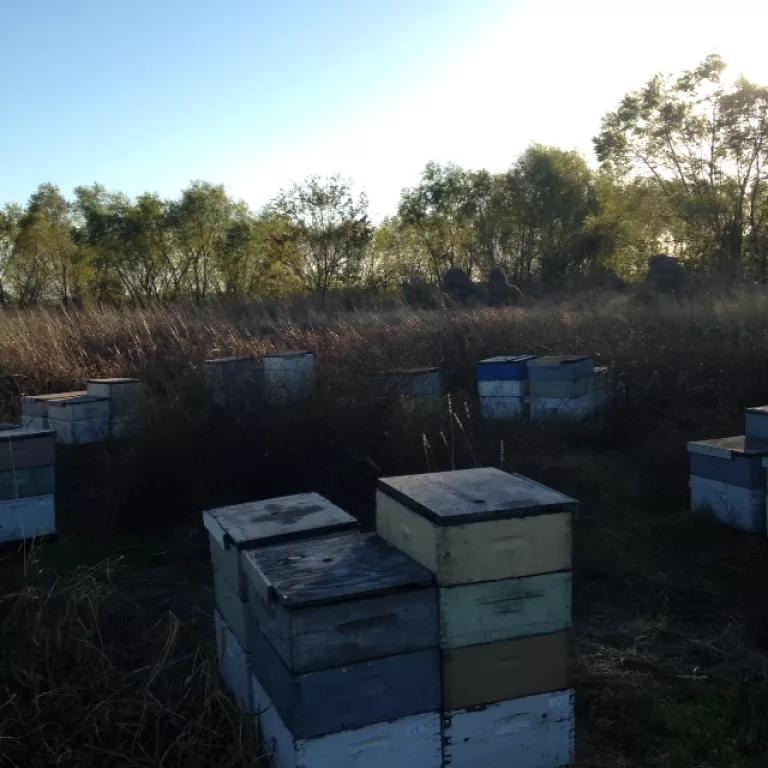
The good news is, soil is resilient and can be rebuilt with a little care. Most of the producers who spoke at the conference believe in working with nature instead of against nature. They want to protect the environment and be good stewards for land that their children will inherit. But that’s not the only reason to get into soil health; many of the producers at the conference had a moment when they realized that spraying and tilling over and over just wasn’t working. The soil was depleted, and the expense and stress of continuous chemical inputs and tillage weren’t cutting it anymore.
I’m very grateful that we have leaders like the Berns family and the Cobbs to show us how to build healthier soils. But there is still a lot to be done, and we all can play a part by being more engaged in our food system. Find out where your food is coming from, and purchase from producers and suppliers that use regenerative farming, as often as possible. At NRDC, we are going to support their work by advocating for farm policies that invest in healthy soil and a more climate resilient future.
